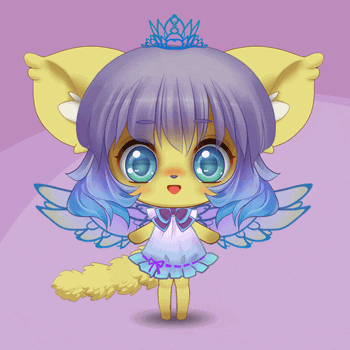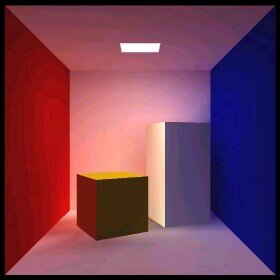Basic Lighting
Understanding light is the basis of good coloring. Here are a few basic tips to help you to understand a little bit more about how light works and how to use it in your art.
Color of light
Light comes in all kinds of colors. Indoor lighting usually has a golden, yellow-tinge. Outdoor light is often very blue, but changes depending on the time of day (beautiful pink sunrises and orange sunsets). Keep this in mind, as it can have a lot to do with setting the mood in a painting.
Position of light
We all know the general lighting cliches, under-lighting makes a character look menacing, backlighting can make them look suspiscious, lighting from the side makes them look heroic, etc. Experiment with lighting positions to suit the mood of your image. Try to break out of the top-side lighting convention in anime art (I know I need to.)
Degree of diffuse
There are two types of light we call diffuse and contrast lighting. Diffuse lighting is soft, ambient lighting. In indoor scenes, diffuse lighting comes from light bounced off the walls. In outdoor scenes, it is lighting from the sky, but not the sun. In general, diffuse lighting comes from dim light coming from a large area. On the other hand, we have contrast lighting. Contrast lighting is direct comes from a strong source, usually a point. Direct sunlight or light from a spotlight or bare lightbulb are examples of contrast lighting.
You may have noticed that in most lighting situations, both diffuse and direct lighting are present, which brings us to the next point.
Multiple Lights
The most common example of multiple lighting is the light from the sun and the light from the sky. The light from the sun creates hard shadows, while the light from the sky lightens the shadows and create some softer secondary shadows within the shadows cast by the sun. Keep this in mind while you are coloring, you can create some very interesting and beatiful effects.
Another popular multiple-lighting scheme is three-point lighting. This type of lighting is used commonly in film, television and photography, especially when lighting people.
Radiosity and bounced-light
Bounced-light can create really beautiful effects in one’s art. For example, the blue pale lightness of the shadows in Hyung Tae Kim’s work is essentially meant to be white reflected-light from the pale, white surroundings. Another example is if you hold a yellow flower under someone’s chin, you will see that even though it doesn’t emit light, it creates a little yellow glow on their skin. because bounced-light often comes from a surface rather than a point, it is very diffused. Filmmakers and photographers often use “fill cards” to bounce soft light onto a subject.
Cast-shadows vs. Shading
Shading and shadows are different. A shadow is created when light is blocked by an opaque object. Shading is the measure darkness of a surface determined by the the angle it faces the light. These two types of shade look different, so keep it in mind when you color.
 Halloween Anime Pumpkin Video Tutorial
Halloween Anime Pumpkin Video Tutorial Beach Camera Girl Study
Beach Camera Girl Study My top 5 hidden gem songs of 2010
My top 5 hidden gem songs of 2010 G.E.E.R. – The Christmas Game That Never Was
G.E.E.R. – The Christmas Game That Never Was Bacon Ornament Tutorial
Bacon Ornament Tutorial






:origin()/pre01/5e19/th/pre/f/2016/042/3/0/sae_at_the_beach_by_sererena-d9rcwsx.jpg)

:origin()/pre00/4175/th/pre/i/2015/139/6/b/anime_north_2015_flyer_by_sererena-d8tyn1h.jpg)




thanks for the post